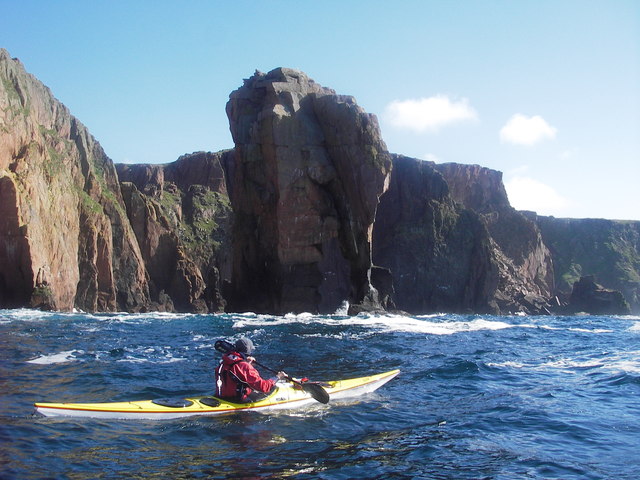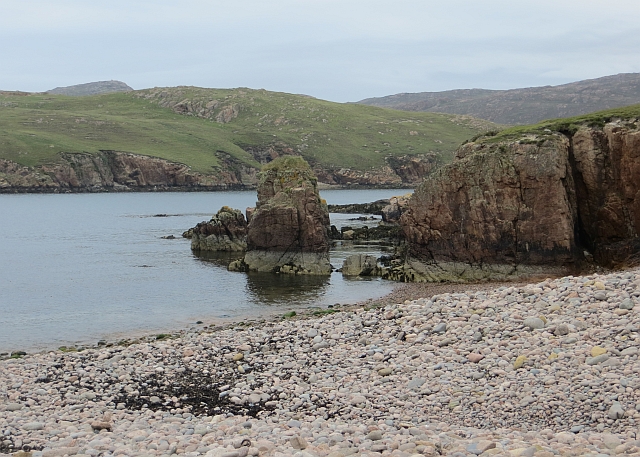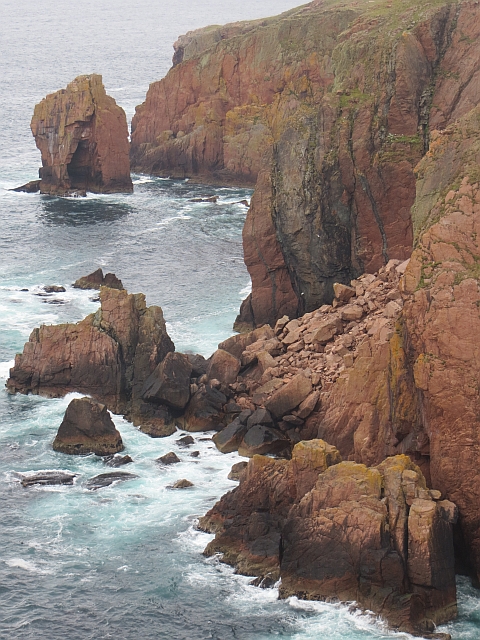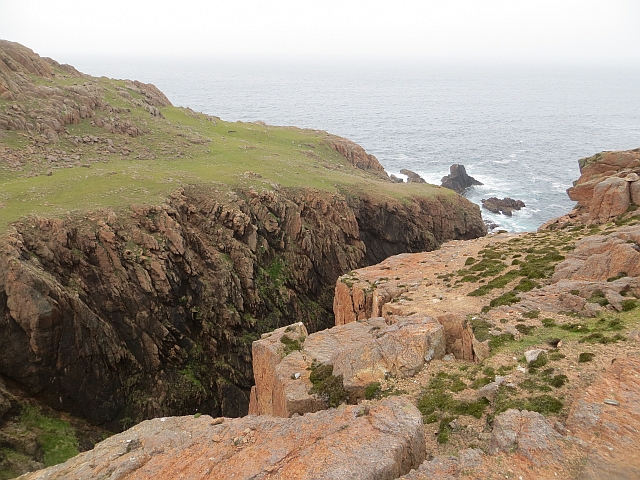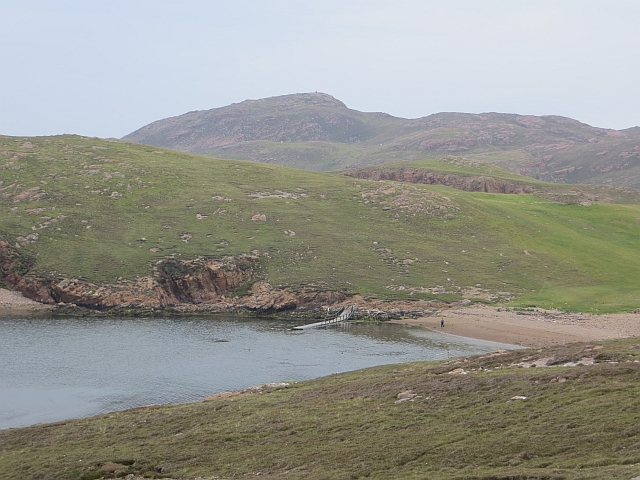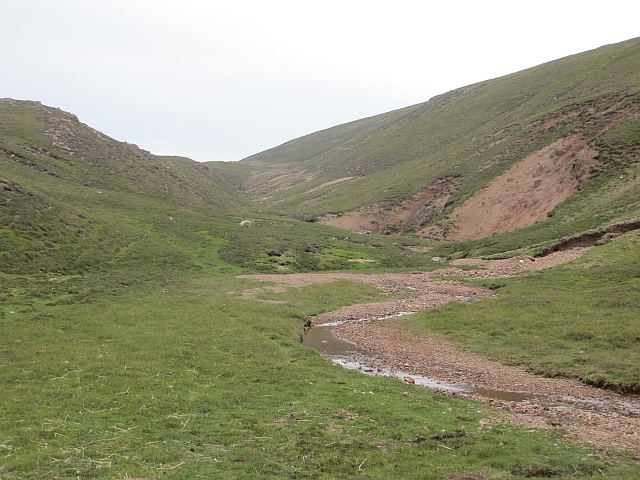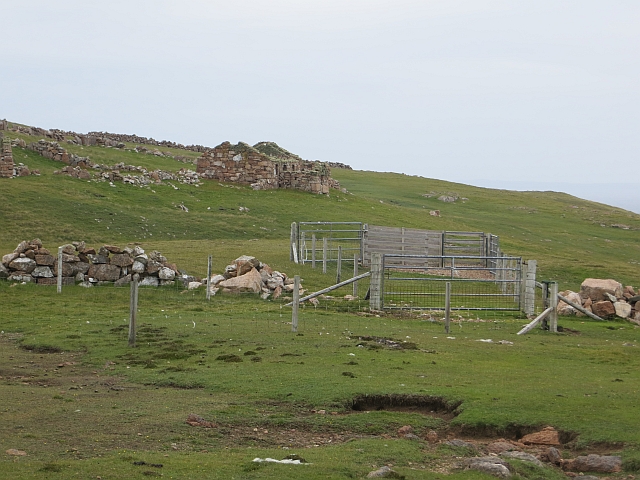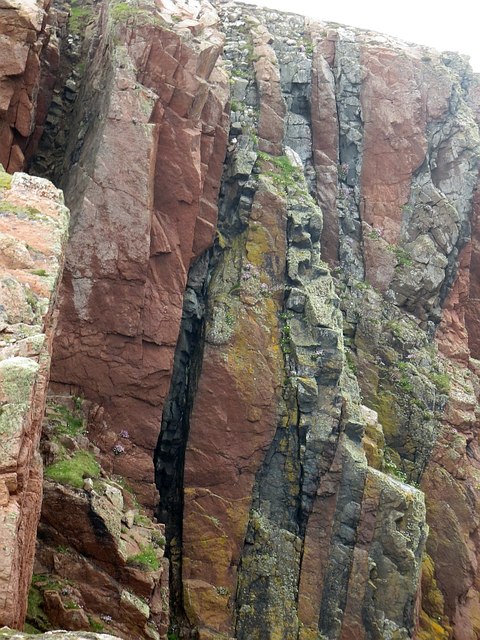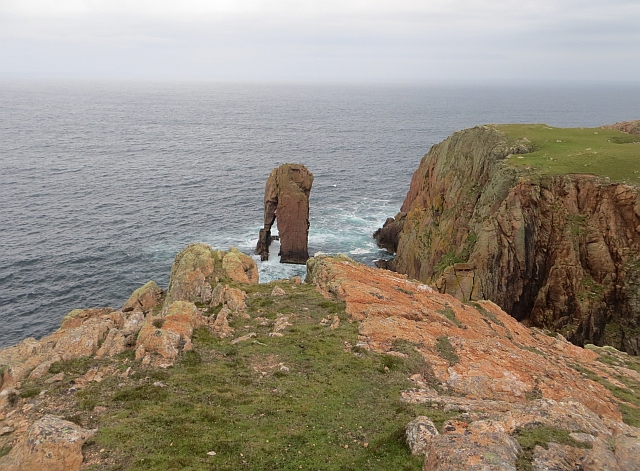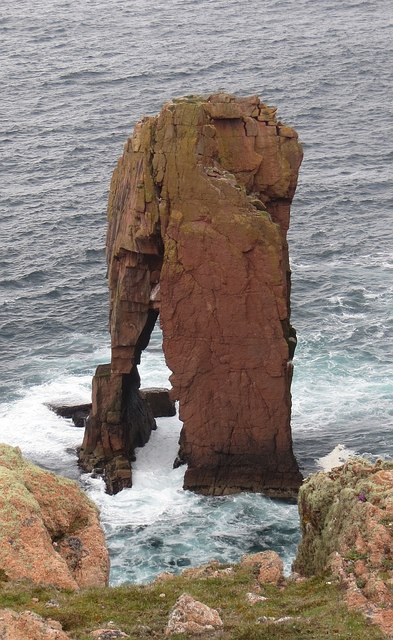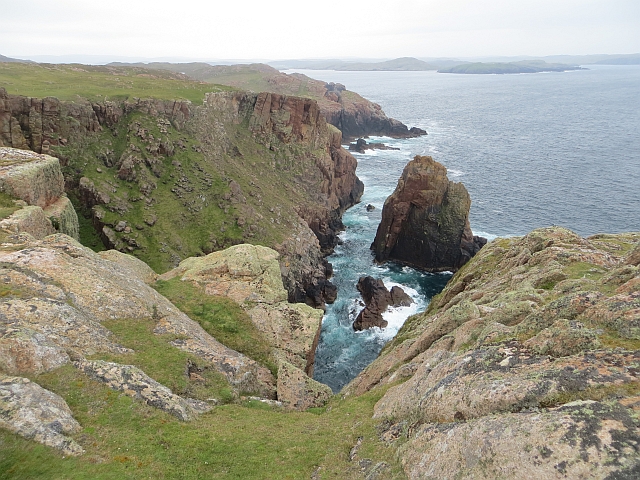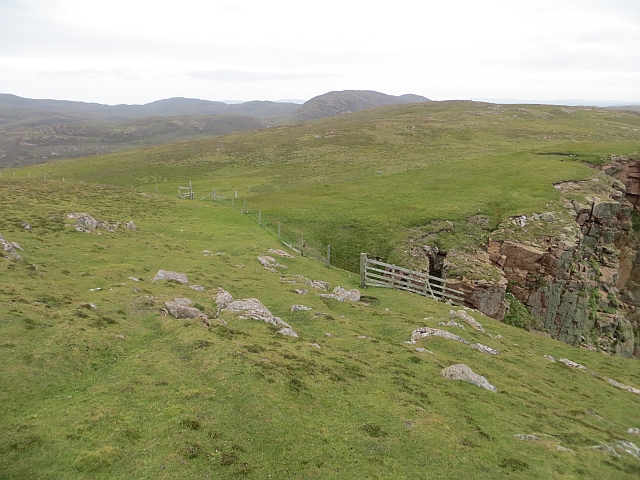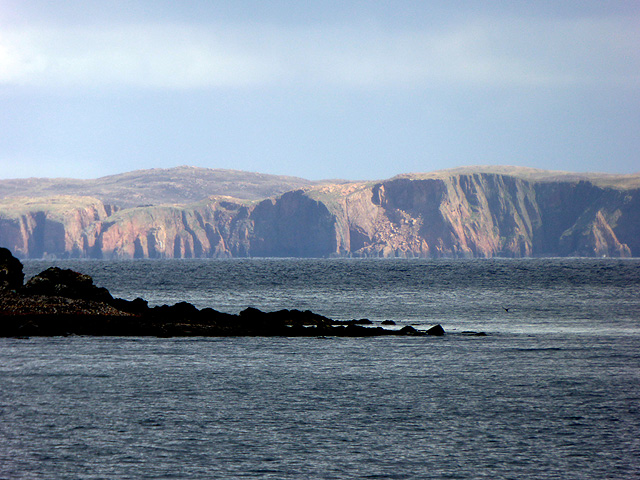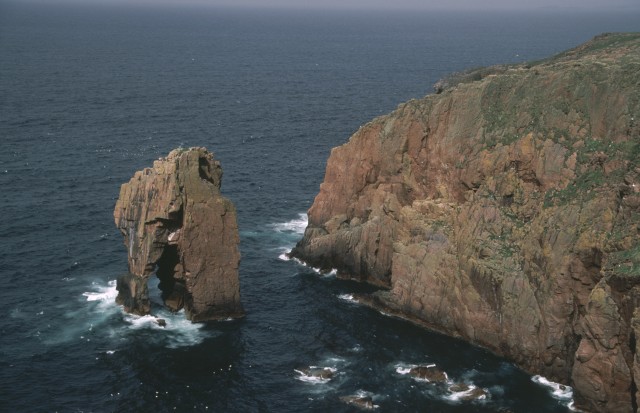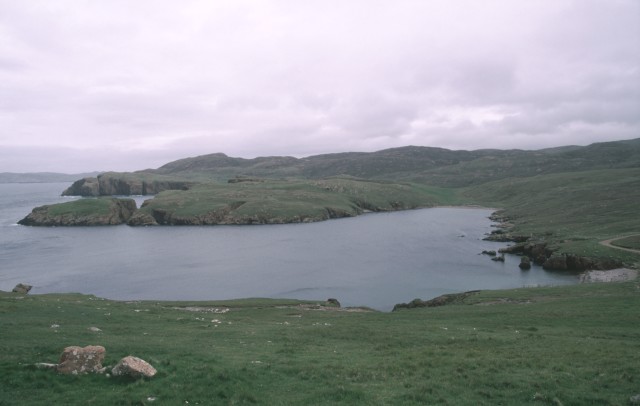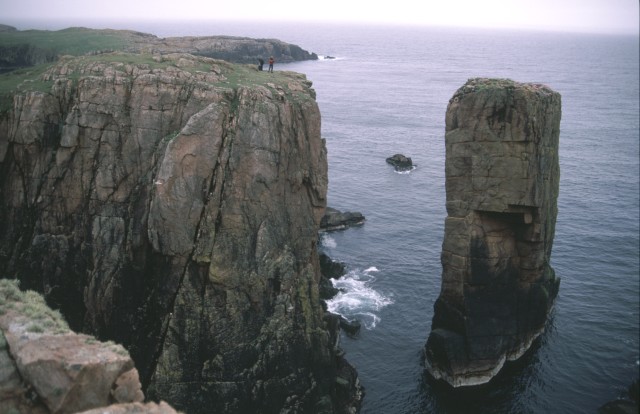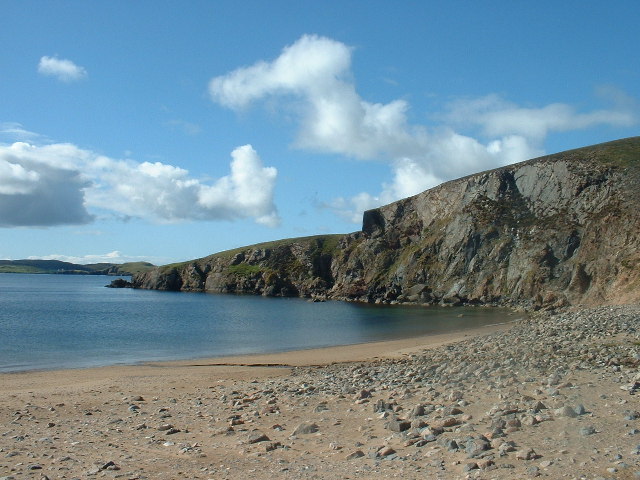Qui Ness
Coastal Feature, Headland, Point in Shetland
Scotland
Qui Ness
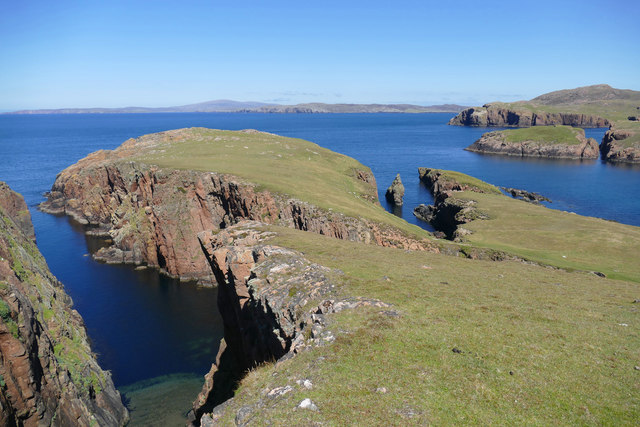
Qui Ness is a prominent coastal feature located in the Shetland Islands, an archipelago off the northeast coast of Scotland. Situated on the eastern side of the main island, Mainland, Qui Ness is known for its stunning natural beauty and dramatic cliffs that overlook the North Sea.
As a headland, Qui Ness juts out into the sea, forming a distinct and recognizable landmark in the area. It is characterized by its rugged terrain, with steep cliffs reaching heights of up to 150 meters (500 feet) in some places. The cliffs are composed of ancient rocks, rich in geological history, and showcase intricate formations and layers.
One of the most remarkable aspects of Qui Ness is its wildlife. The area is a haven for various seabird species, including puffins, guillemots, and razorbills. These birds nest on the cliffs during the breeding season, creating a bustling and vibrant atmosphere. Visitors often have the opportunity to witness these birds diving into the sea to catch fish, providing an incredible spectacle.
In addition to its natural beauty, Qui Ness also holds historical significance. The headland features the remains of Iron Age settlements, which are evidence of human activity in the area dating back thousands of years. These ancient ruins offer insight into the lives of the people who once inhabited this rugged coastal landscape.
Overall, Qui Ness is an awe-inspiring coastal feature that combines breathtaking scenery, abundant wildlife, and a rich historical heritage. Its cliffs, wildlife, and archaeological sites make it a must-visit destination for nature enthusiasts, birdwatchers, and history buffs alike.
If you have any feedback on the listing, please let us know in the comments section below.
Qui Ness Images
Images are sourced within 2km of 60.376065/-1.468223 or Grid Reference HU2965. Thanks to Geograph Open Source API. All images are credited.

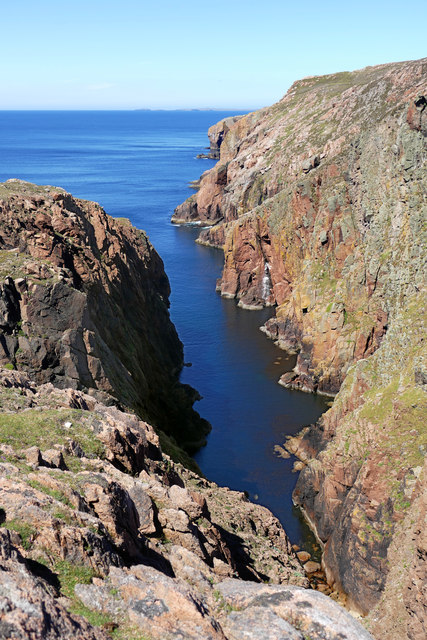
Qui Ness is located at Grid Ref: HU2965 (Lat: 60.376065, Lng: -1.468223)
Unitary Authority: Shetland Islands
Police Authority: Highlands and Islands
What 3 Words
///shock.promoting.bleat. Near Brae, Shetland Islands
Nearby Locations
Related Wikis
Muckle Roe
Muckle Roe is an island in Shetland, Scotland, in St. Magnus Bay, to the west of Mainland. It has a population of around 130 people, who mainly croft and...
Linga (near Vementry)
Linga is one of the Shetland Islands, near Vementry. It is one of many islands in Shetland called Linga. The island is uninhabited. == Geography and... ==
Mavis Grind
Mavis Grind (Old Norse: Mæfeiðs grind or Mæveiðs grind, meaning "gate of the narrow isthmus") is a narrow isthmus joining the Northmavine peninsula to...
Vementry
Vementry (Old Norse: "Vemunðarey") is an uninhabited Scottish island in Shetland on the north side of the West Mainland, lying south of Muckle Roe. �...
Nearby Amenities
Located within 500m of 60.376065,-1.468223Have you been to Qui Ness?
Leave your review of Qui Ness below (or comments, questions and feedback).
